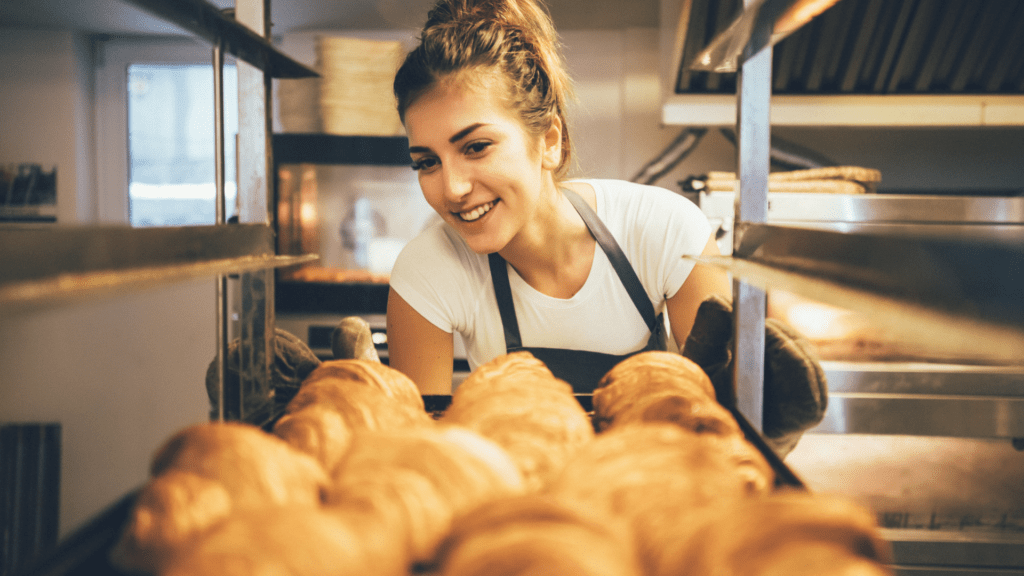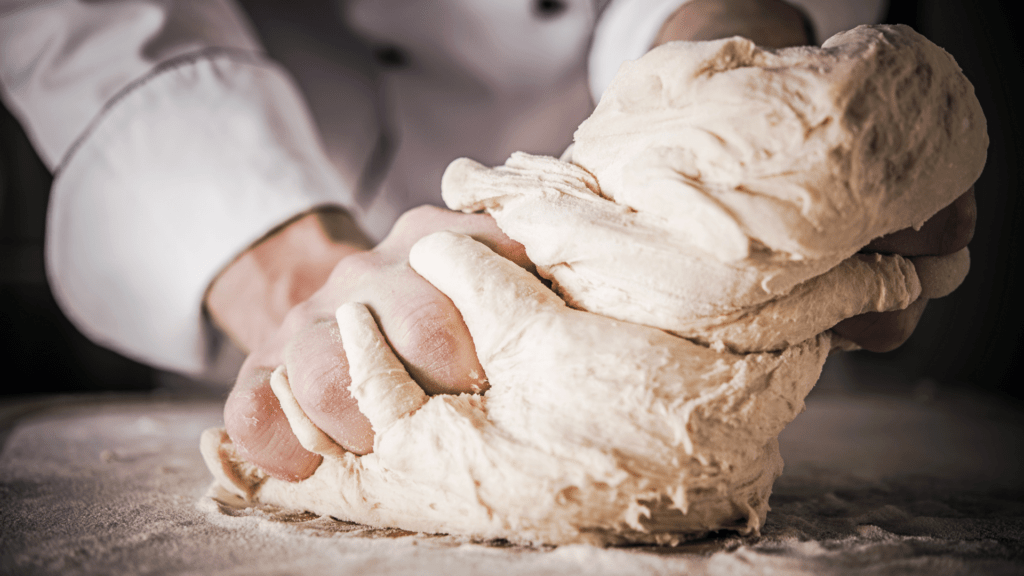Bread, a staple in many cultures, is not just a food item; it’s an art. Whether you’re a novice or an experienced baker, the journey to perfecting your bread-making skills is both challenging and rewarding. In this comprehensive guide, we’ll delve into the nuances of baking, offering valuable tips and techniques to elevate your bread game. Get ready to embark on a flavorful adventure where we demystify the secrets behind the perfect loaf.
I. The Foundation: Choosing the Right Ingredients
Before we dive into the intricacies of baking, let’s establish the importance of selecting the right ingredients. The quality of what goes into your bread significantly impacts the outcome. Here are some tips to ensure you start on the right foot:
- Quality Flour: Begin with high-quality flour; it’s the backbone of your bread. Opt for unbleached, all-purpose or bread flour for the best results. Experiment with different types like whole wheat or rye for unique flavors and textures.
- Yeast Matters: Use fresh, active yeast to ensure proper fermentation. If you’re using dry yeast, activate it in warm water with a pinch of sugar before incorporating it into your dough.
- Salt Balance: Don’t underestimate the role of salt. It enhances flavor and controls yeast activity. Choose a fine, high-quality salt, and measure it accurately.
II. The Art of Kneading: Transforming Dough into Perfection
Kneading is where the magic happens. It’s the process of developing gluten, creating a structure that holds the gases produced during fermentation. Follow these steps for the perfect knead:
- Technique: Use the heel of your hands to push the dough away from you, then fold it back towards you. Rotate the dough as you go. Knead for about 10-15 minutes or until the dough becomes smooth and elastic.
- Consistency: The dough should be tacky but not overly sticky. If it’s too sticky, add a little flour gradually. If it’s too dry, sprinkle water sparingly.
- Rest Periods: Allow the dough to rest between kneading sessions. This relaxes the gluten, making it easier to work with. Patience is key here.
III. Fermentation: Letting the Dough Breathe
Fermentation is where the dough rises and develops its distinct flavor. Mastering this step is crucial for achieving the perfect crumb. Here’s how to nail it:
- Time and Temperature: Find the right balance between time and temperature. Warmer environments accelerate fermentation, while cooler settings slow it down. Experiment to see what works best in your kitchen.
- Bulk Fermentation: Let the dough rise until it doubles in size. This can take anywhere from 1 to 2 hours, depending on various factors. Use a clear bowl to monitor the growth.
- Shaping: After the bulk fermentation, gently shape the dough into your desired form. This is a delicate process that helps maintain the gas produced during fermentation.
IV. The Power of Steam: Achieving the Perfect Crust
A key element in achieving the coveted crust on your bread is steam during the baking process. Follow these tips for a crust that’s crispy and golden:
- Preheat and Steam: Preheat your oven with a baking stone or cast-iron skillet inside. When you’re ready to bake, pour hot water into the skillet to create steam. This mimics the steam injection used in professional bread ovens.
- Spritzing: Alternatively, spritz water directly onto the dough just before placing it in the oven. This creates a burst of steam that aids in crust development.
- Lidded Pot Method: For artisan-style loaves, consider baking in a lidded pot for the first part of the baking process. The trapped steam contributes to a beautiful, rustic crust.
V. Creative Flavor Additions: Elevating Your Bread Game
Enhance the flavor profile of your bread by experimenting with creative additions. Here are some ideas to spark your culinary creativity:
- Herbs and Spices: Add chopped herbs like rosemary, thyme, or oregano to infuse your bread with aromatic flavors. Experiment with spices like cinnamon or cardamom for sweet bread variations.
- Nuts and Seeds: Incorporate texture by mixing in nuts or seeds such as sunflower, pumpkin, or flaxseeds. Toast them before adding to intensify their flavors.
- Citrus Zest: Grated citrus zest, such as orange or lemon, adds a zesty brightness to your bread. It’s a subtle yet impactful addition that can elevate your baking.
VI. Troubleshooting Common Bread Baking Issues: Overcoming Challenges
Even the most seasoned bakers encounter challenges in the quest for perfect bread. Let’s address some common issues and provide solutions to ensure your loaves turn out flawlessly:
- Flat Bread:
- Problem: Your bread doesn’t rise enough, resulting in a flat appearance.
- Solution: Ensure your yeast is fresh and active. Additionally, check the temperature during fermentation; it might be too cold. Adjust as needed and allow sufficient time for the dough to rise.
- Dense Texture:
- Problem: The bread is heavy and dense, lacking the desired airy texture.
- Solution: Over-kneading can lead to a dense crumb. Be mindful of the kneading time, and don’t skip the resting periods. Also, make sure your yeast is not expired.
- Burnt Crust:
- Problem: The crust is overly browned or burnt.
- Solution: Monitor your bread closely during baking. If the crust is browning too quickly, cover it with aluminum foil. Adjust your oven temperature if necessary and consider lowering the baking time.
- Sourdough Troubles:
- Problem: Sourdough starters can be unpredictable, leading to inconsistent results.
- Solution: Maintain a consistent feeding schedule for your sourdough starter. Adjust the hydration level if needed, and be patient; sourdough requires longer fermentation times.
VII. Advanced Techniques: Going Beyond the Basics
For those ready to elevate their bread-making game, exploring advanced techniques opens up a world of possibilities. Here are a few techniques that can take your skills to the next level:
- Autolyse Method:
- Allow the flour and water to hydrate before adding other ingredients. This enhances gluten development and results in a more extensible dough.
- Pre-ferments:
- Experiment with pre-ferments like poolish or biga to add complexity to your bread’s flavor profile. These starters contribute unique fermentation by-products.
- Scoring Artistry:
- Master the art of scoring to create intricate patterns on the bread’s surface. Proper scoring allows the dough to expand evenly during baking, enhancing both appearance and texture.
VIII. Sustainable Baking Practices: Nurturing the Environment and Your Community
As we immerse ourselves in the joy of baking, let’s also consider the environmental impact of our culinary pursuits. Adopting sustainable practices not only benefits the planet but can also enhance your connection with the community. Here are some tips for environmentally conscious baking:
- Local Ingredients:
- Support local farmers and millers by sourcing your flour and other ingredients locally. This not only reduces the carbon footprint but also promotes sustainable agriculture.
- Reducing Food Waste:
- Get creative with leftover bread. Stale bread can be transformed into croutons, breadcrumbs, or used in savory bread puddings. Minimizing waste is a small yet impactful contribution to sustainability.
- Sharing the Bounty:
- Bake extra loaves to share with neighbors, friends, or local community centers. Building a sense of community through shared food fosters a spirit of togetherness.
Conclusion: Embracing the Art, Science, and Joy of Bread Baking
As we conclude our journey into the art of perfect bread, remember that baking is both a science and an art. It’s a journey of exploration, experimentation, and, most importantly, enjoyment. Each loaf tells a story of your unique approach and personal flair.
Whether you’re a weekend enthusiast or a dedicated artisan, mastering the art of perfect bread is a continual process of growth and discovery. Embrace the challenges, savor the triumphs, and share the fruits of your labor with those around you. In the world of bread baking, the possibilities are as endless as your creativity and dedication allow. Happy baking!


